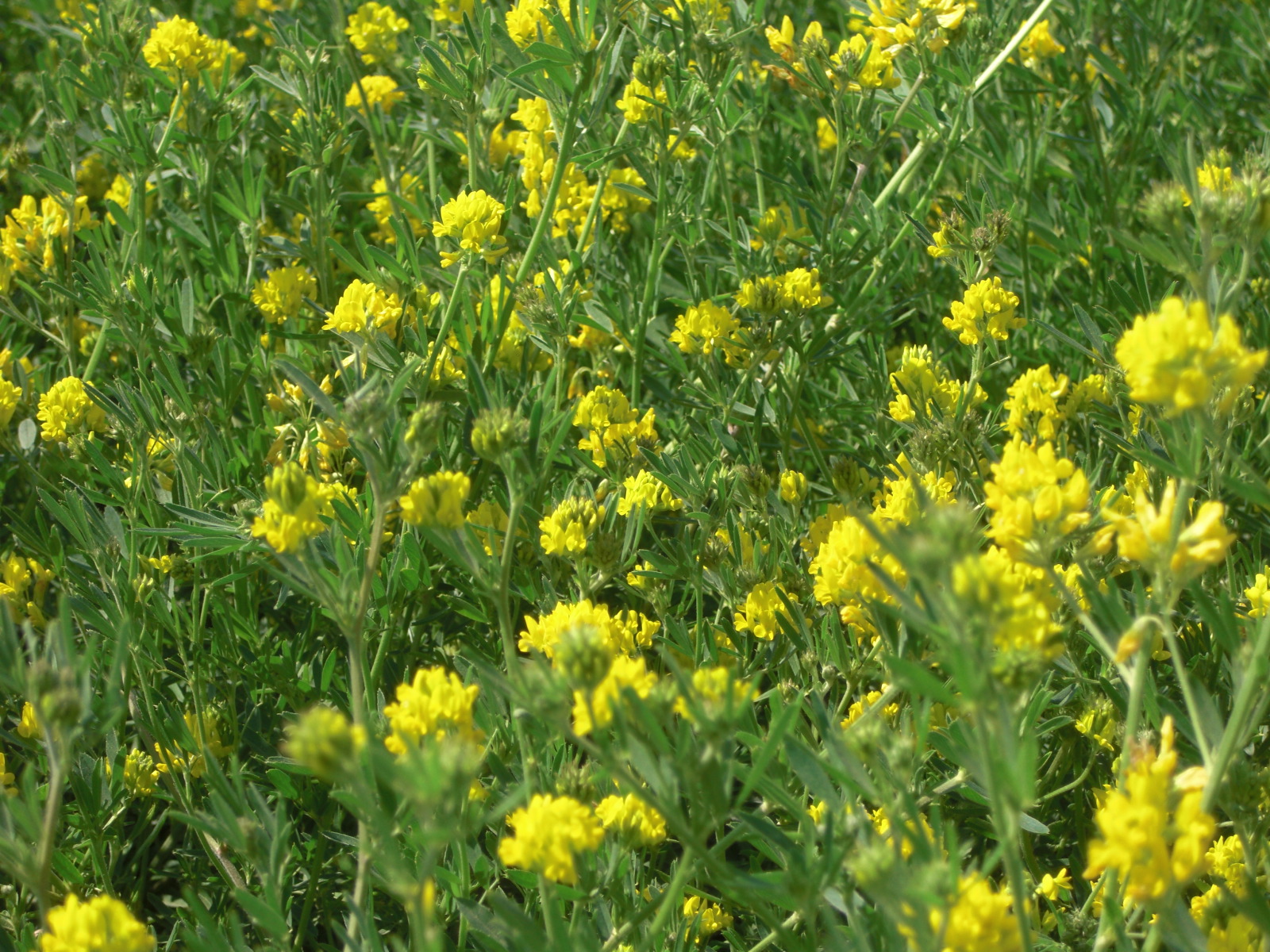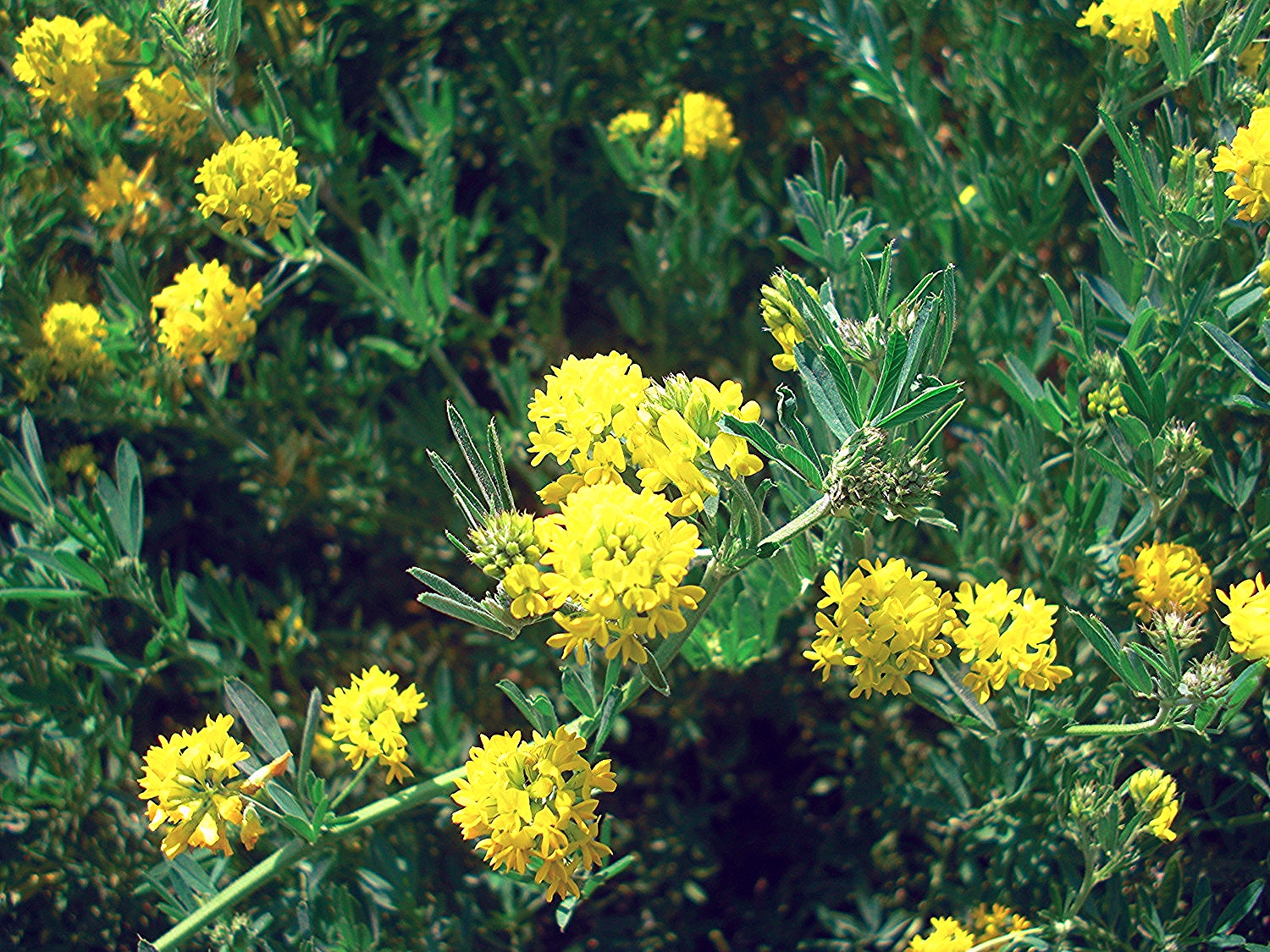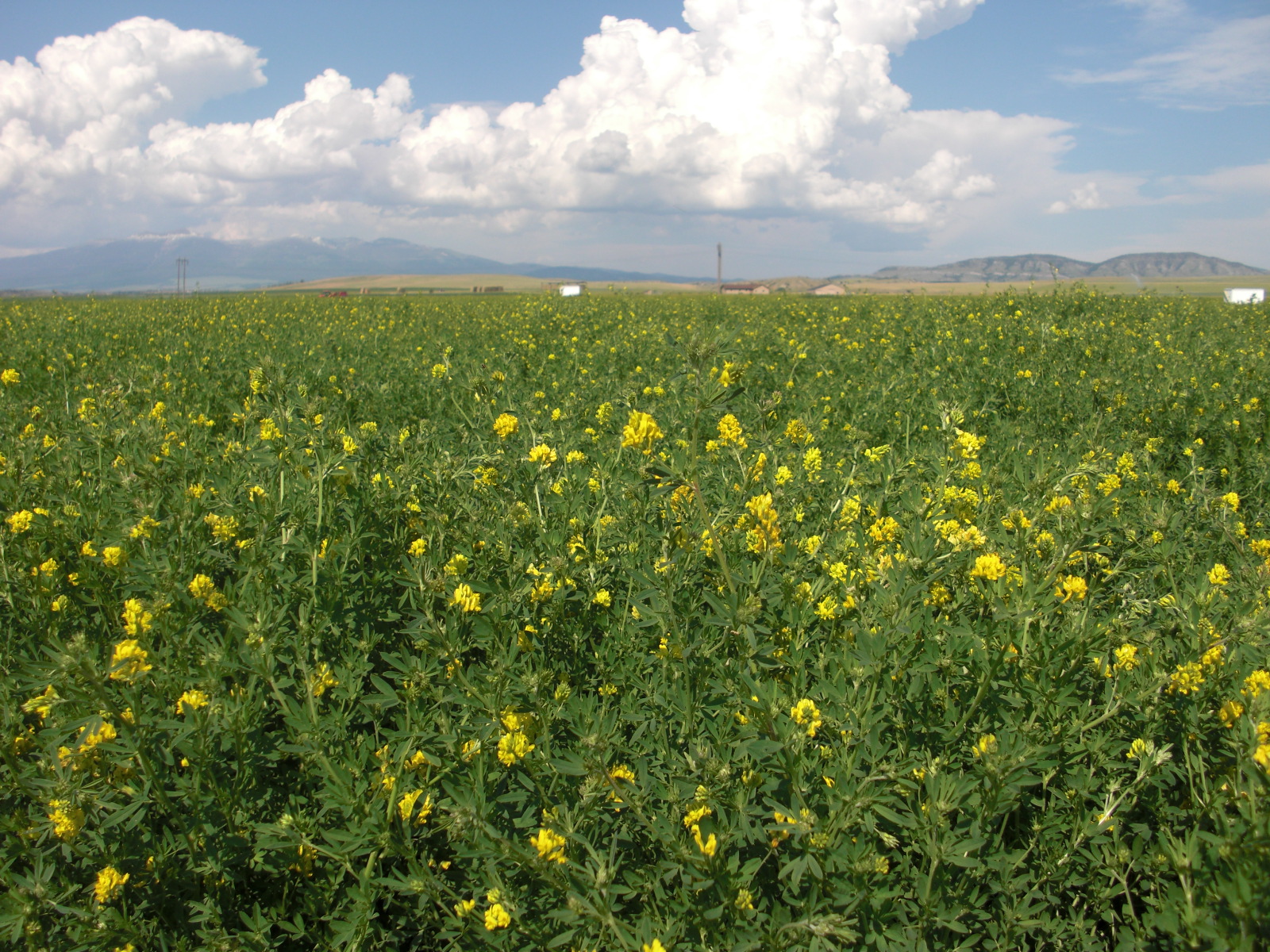Medicago sativa ssp. falcata* (Falcata alfalfa)
Also called Yellow-flowered alfalfa. Persistent, long-lived, very resilient nitrogen fixing perennial legume with yellow flowers. Widely adapted within semi-arid environments. Leaves and stems are finer than conventional purple-flowered Alfalfa (M. sativa) and its root system is much more shallow and fibrous. Crown is set uniquely low beneath the soil surface. Low crown depth prevents damage from trampling and combined with significant plant dormancy, results in extreme tolerance to drought and cold. Excellent palatability to livestock and wildlife, including big game and waterfowl. Use in grazing systems, rangelands, wildlife habitat enhancement and erosion control projects. Readily hybridizes with common purple flowered alfalfa. Varieties listed below.
DISTRIBUTION / ADAPTATION
INFORMATION & ATTRIBUTES
Family: Fabaceae
Duration: Perennial
Growth Habit: Forb
Native Status: Introduced
Growth Form: Single Crown
Mature Height: 24 in.
Bloom Color: Yellow
Bloom Period: Spring
Annual Precipitation: 7-65 in.
Drought Tolerance: High
Shade Tolerance: Intolerant
Fire Resistance: No
Fire Tolerance: High
Nitrogen fixation: High
Bloat: Medium
SOIL ADAPTATION
Coarse Texture: No
Medium Texture: Yes
Fine Texture: Yes
Salinity Tolerance: Medium
CaCO3 Tolerance: High
pH Range: 6.0-8.5
SEEDING NOTES
Seeds per Pound: 454,000 (~2.25x purple-flowered alfalfa)
Seeding Rate: 1-2 lbs/acre
Season: Spring/Fall
Days to Germination:
VARIETIES
Don - Grazing-type alfalfa for mixed-grass seedings on semiarid rangelands and irrigated pastures, intended to increase forage production and nutrient values over decades. Non-aggressive but significantly more persistent than purple-flowered alfalfas on harsh rangelands and in competitive grazing systems. Grows below the canopy of most forage grasses. Enters dormancy when water is limited for an extended period, regrowing when moisture returns. (Released 2009)





